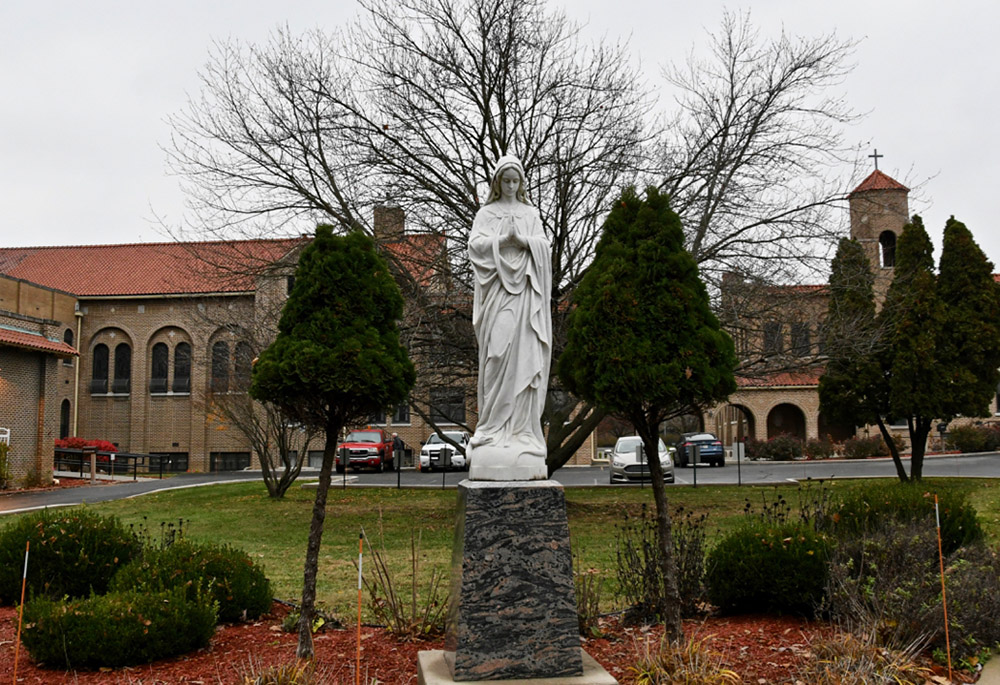
The Spanish Mission style buildings on the Victory Noll campus in Huntington, Indiana, have been sold to the county community corrections program for its drug court program aimed at getting drug addicts treatment instead of jail terms. (GSR photo/Dan Stockman)
Thanks to years of preparation, the remaining members of Our Lady of Victory Missionary Sisters were acceptant, and even hopeful, as they planned to transform their dwindling community in the years remaining until completion.
An assisted living and nursing facility recently built on their grounds in this town southwest of Fort Wayne is already home to some of the 35 sisters who are left. Much of the 100 acres of land had already been sold to a preservation trust.
But the fate of the nearly century-old motherhouse was bleak.
The congregation, known as the Victory Nolls, had spent more than a year trying to find a buyer for the building with no success. Eventually they gave up and prepared to deconstruct it and sell their remaining land to ACRES Land Trust, the local preservation nonprofit they sold much of their property to several years ago.
But when they informed neighbors and community leaders in the town of about 17,000, the mayor called and asked if the sisters would be open to another option.
"Of course!" replied Sr. Mary Jo Nelson, the congregation's president. Soon, the mayor, the judge overseeing the county drug court and the head of community corrections were touring the campus, and in October, the sale was finalized: The complex is now home to the part of the local courts aimed at keeping those convicted of drug offenses out of the prison system.
"It's a restorative program that gives healing, skill building and therapy to people addicted to drugs," Nelson said. "They're low risk, high need. They don't need to be in jail, but they need to be in a program."
Nelson declined to give the price, but said the building was "basically a gift" to the community corrections program. The sisters rent some office space and residential areas, and the rent is "practically nothing," she said.
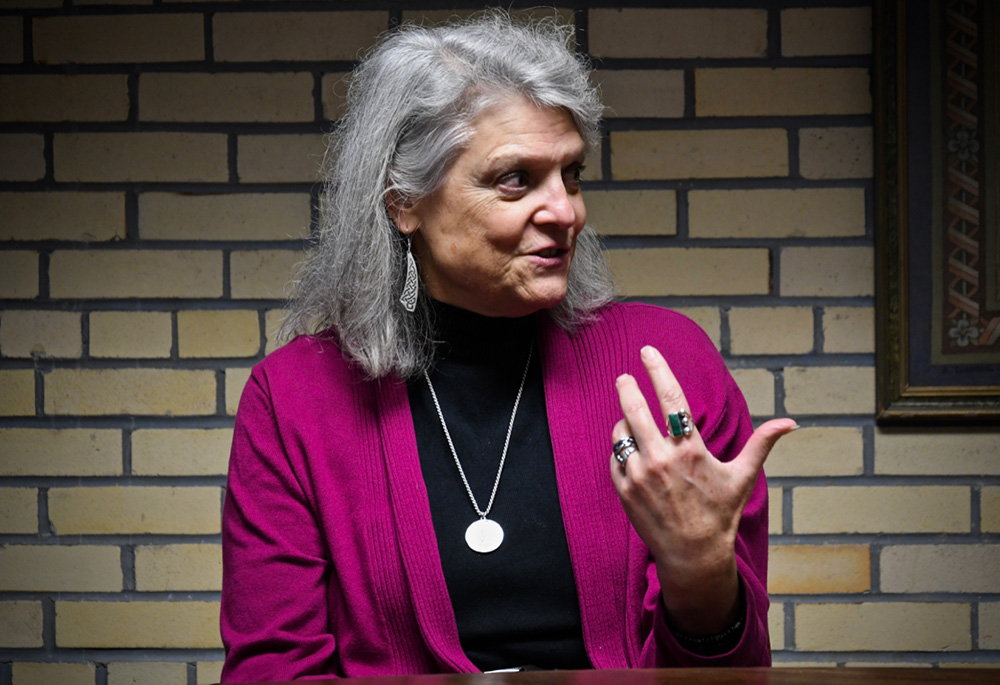
Victory Noll Sr. Ginger Downey, general secretary of the community, talks about the decision to sell the congregation’s motherhouse in Huntington, Indiana. (GSR photo/Dan Stockman)
Sr. Ginger Downey, general secretary, said the sisters backed the idea of selling the building to community corrections, and were glad it wouldn't be torn down. Completed in 1925, the building is in the Spanish Mission style to reflect the congregation's missionary work in the Southwest and is on the National Register of Historic Places.
"Why wouldn't we give this a chance?" Downey said. "And this saves the building, which the biggest thing was the chapel. That's a sacred space where they made their vows."
Nelson said learning to let go of buildings was not just freeing, but a reminder of what matters.
"We are the buildings. We are the structure. We are the essence of this life," Nelson said. "The buildings were the container, but the container now is too big."
It is a process congregations across the United States are going through: communities are putting their land into preservation trusts or similar structures to protect them from development; they are selling or converting buildings to create long-term care facilities for aging sisters and sometimes laypeople; they are downsizing to become more efficient or reduce their environmental impact; some are selling land and buildings to pay for unfunded health care needs.
But others, like the Victory Nolls, are going further, working to transform their assets into engines of change.
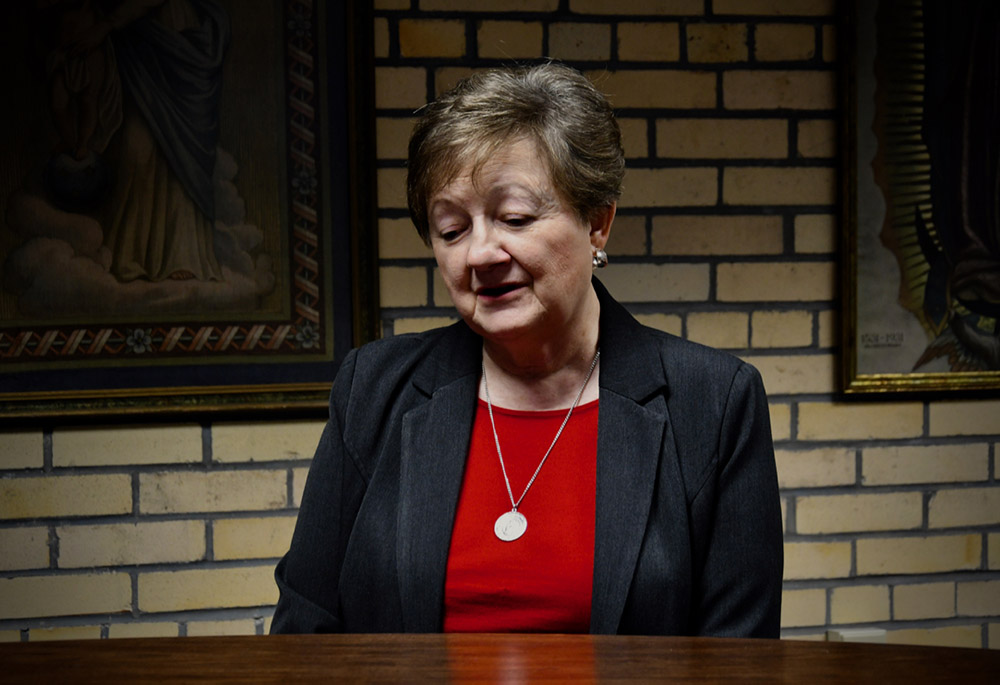
Victory Noll Sisters President Sr. Mary Jo Nelson talks about the process of preparing for completion. The community has held its last Chapter meeting and has asked for a pontifical commissary. (GSR photo/Dan Stockman)
Greater urgency as numbers decline
In some ways, sisters' efforts to transform unneeded assets is not new — congregations have been doing projects such as converting buildings into affordable senior housing on their campuses for years. But there are two forces at work that are creating more urgency: Societal factors such as the nation's racial reckoning, income inequality and social polarization are encouraging them to do more than simply protect their land from development; while declining numbers and aging members are pushing more congregations to prepare for completion.
"I think that more communities are transitioning or divesting of land and buildings than in the past and there is more and heightened attention to that type of activity," said Sr. Mary Pellegrino in an email. "In addition, community demographics and finances are increasing the sense of urgency to address the best use or disposition of tangible capital assets like land and buildings."
Pellegrino is a Sister of St. Joseph of Baden, Pennsylvania, a former president of the Leadership Conference of Women Religious, and is now a senior vice president at Plante Moran, where she assists in religious communities' financial and ministry planning.
Advertisement
The sense of urgency is real: According to statistics shared by LCWR spokeswoman Sr. Annmarie Sanders at the Communicators for Women Religious conference in October, one-third of all congregations in the United States have fewer than 50 members; eight in 10 women religious are age 70 and above. And while most communities have enough members for leadership and chapters through 2025, that number is expected to drop significantly after that date.
Aging membership and declining vocations are taking a tole: As many as 300 of the 420 institutes of women religious in the United States are in their last decades of existence, according to an April 2019 LCWR newsletter.
Many congregations are "rightsizing," said Sr. Stephanie Still, executive director of the National Religious Retirement Office and a member of the Sisters of the Presentation of the Blessed Virgin Mary.
"They're looking at the future — they may be smaller in numbers, they don't need everything anymore, they may be changing how they're delivering their health care," Still said. "What you're seeing is planning for the future."
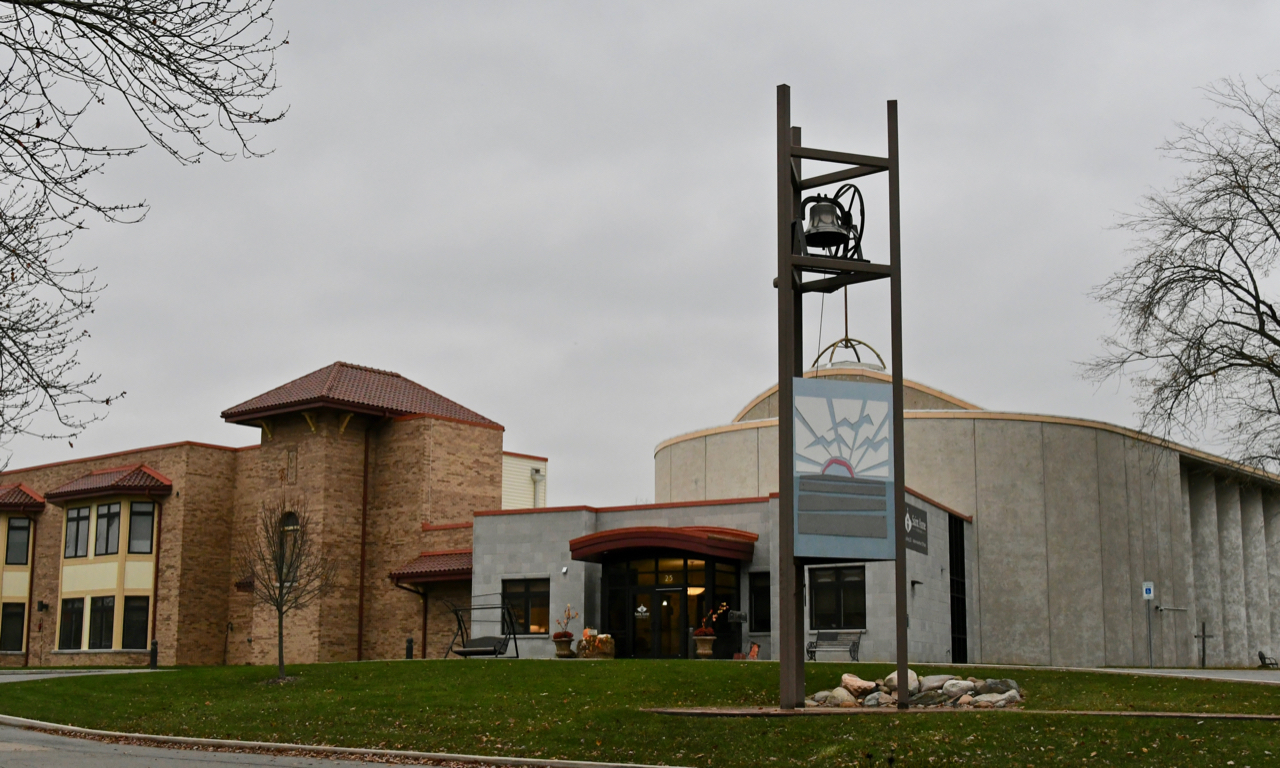
The Victory Nolls' Holy Family Building and their chapel were sold in 2016 to a local Catholic nursing home, which will provide nursing care to any sister who needs it and is also open to lay people of any faith. Assisted-living apartments were also built as part of the project. (GSR photo/Dan Stockman)
That planning is getting even more important, she said, as gerontologists point out that people will be older for much longer as lifespans are extended.
"We might have younger members in their 40s, but we need to care for them for another 60 years," Still said. "That impacts your finances going into the future."
The sale of convents will have to help pay for health care and retirement costs for many congregations as so few have the money to pay for it: The National Religious Retirement Office reported that of the 531 congregations of men and women religious giving information, only 27 were adequately funded.
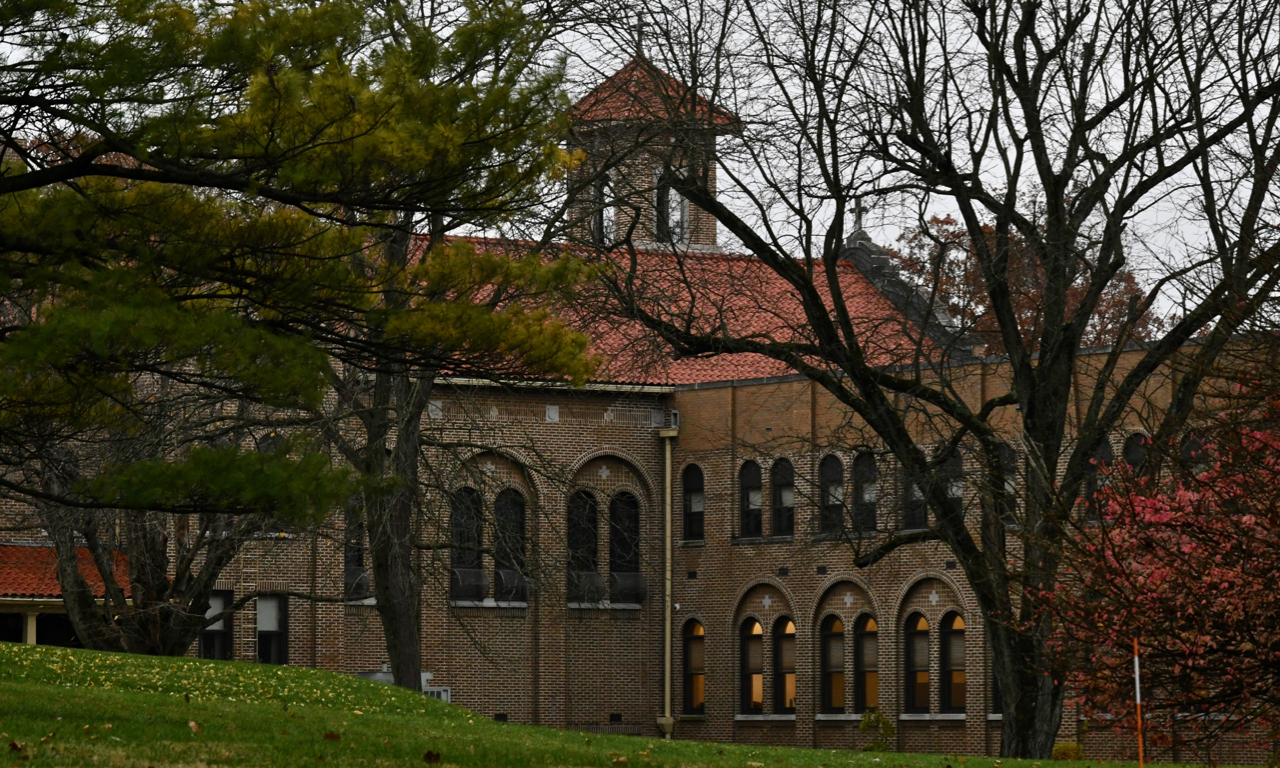
The Spanish Mission style buildings on the Victory Noll campus in Huntington, Indiana, have been sold to the county community corrections program. Office space and a small residential area are rented back to the congregation for its use as it prepares for completion. (GSR photo/Dan Stockman)
So while sisters may not like selling to a developer who will turn them into apartments or shopping centers, many have little or no choice. Financial need, as well as local zoning and municipal planning constraints play a significant role in determining the use and disposition of land and property assets, Pellegrino noted.
But for those who have choices, the idea that their land and buildings can become agents of change is a powerful one.
When the three-member presidency of the Leadership Conference of Women Religious in August apologized for women religious' role in racism during the assembly and prayed for forgiveness, Sr. Linda Romey, a Benedictine Sister of Erie, Pennsylvania, said in her response that the land and buildings sisters are divesting of could be a sort of reparations for those sins.
"Rather than 'completing' our mission, we create new inroads by fulfilling our mission in finding ways to return our land and/or resources to those from whom they were taken or to whom they were denied — Indigenous and Black communities — and let our story come full circle, come to 'full'-fill gospel justice," Romey said during the assembly. "Community land trusts, alternative economy models, and land back efforts are already growing all around us. … Our faithfulness demands acts of repentance, reparation and re-creation."
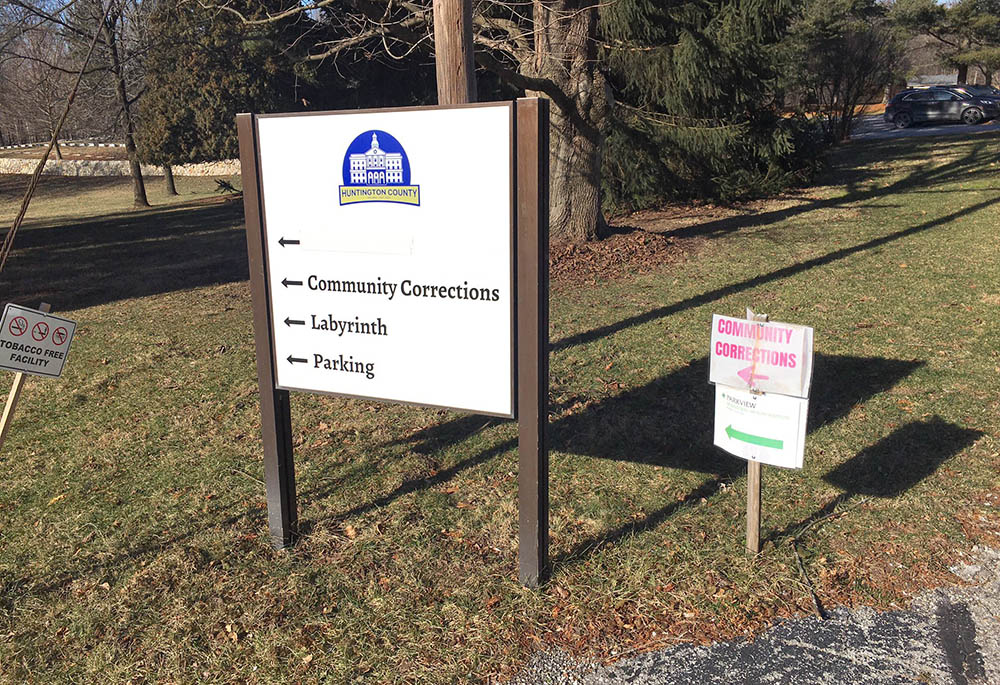
The Victory Nolls Sisters found a way to transform some of their assets into "engines of change" when they agreed to sell some of its buildings to the county community corrections program for its drug court program aimed at getting drug addicts treatment instead of jail terms. (Paul Siegfried/Courtesy of Victory Noll Sisters)
An example of what is possible is a collaboration between the Sisters of St. Joseph of Brentwood, New York, and the Shinnecock Kelp Farmers, an Indigenous woman-led cooperative, kelp hatchery, and regenerative ocean farm. The Shinnecock will use the former coastal retreat center land the sisters own in the Hamptons to farm kelp, which will help restore Shinnecock Bay, provide a source of income for the tribe, and continue their connection to the sea, which stretches back thousands of years. Another partner in the project was Nuns & Nones, which won a J.M.K. Innovation Prize for the work.
Other projects include the Congregation of the Sisters of St. Joseph converting the campus that once housed a provincial motherhouse in New Orleans into a massive water garden to hold stormwater and help prevent flooding. The 25 acres will drain a storm sewer that often overflows into the streets and retain up to 10 million gallons of water until it can be released into the nearby bayou. For other examples of congregations selling assets, see the graphic below.
And it is not only sisters who recognize the potential for change these assets hold.
Catholic Charities USA has created a guide to converting surplus church property into affordable housing, citing the former convent of the Sisters of the Holy Names of Jesus and Mary in Spokane, Washington, which is now home to 75 supportive housing apartments for homeless families and individuals.
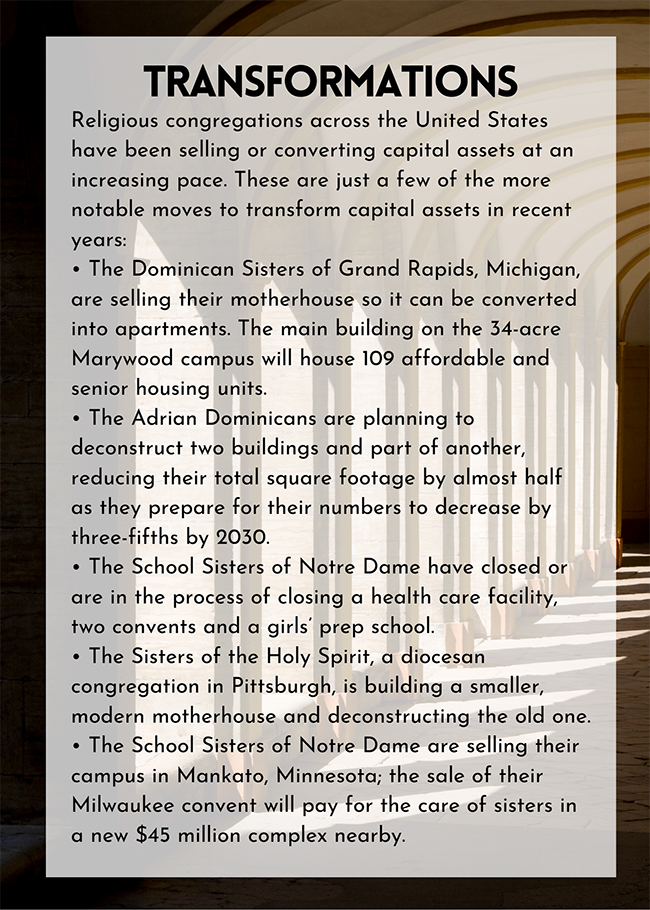
(GSR graphic/Dan Stockman; Information sourced via MiBiz.com; Adrian Dominicans; CatholicReview.org; PittsburghCatholic.org; MankatoFreePress.com; FT.com)
'They start with their mission'
Pellegrino said sisters have always used their resources to support their mission, even if it was sometimes indirect, such as large convents to house hundreds of sisters carrying out that mission.
"Over time both the expressions of mission and the needs of our members have changed and evolved, and at every turn we have had to realign our resources in service to those evolving needs and mission expressions," she wrote. "Regardless of the circumstances, I think that sisters are coming to any discernment about the use or disposition of these types of assets with different questions and different awareness than we may have had in the past. The current social and cultural climate is a very different context for this discernment … so we may be making very different decisions about our property and land than we have in the past."
Still said she is not surprised congregations are trying to use their assets as tools of social change, because that's what they've always done.
"Whenever religious make a decision about anything, they start with their mission," she said. "Even when they're right-sizing, they don't start with designing a building, they start with their mission and how a building might serve that."
Victory Noll Vice President Sr. Lucille Martinez said having the motherhouse become home to a community corrections program and the congregation preparing for completion are just new doors God has opened — change has been the one constant in religious life over the centuries. Religious life has never been about buildings or land or numbers, Martinez said, it's about the life.
"It's part of the dynamic everyone goes through. You have to let go," she said. "Now we have no outside ministries, we have no buildings, but we have each other."






